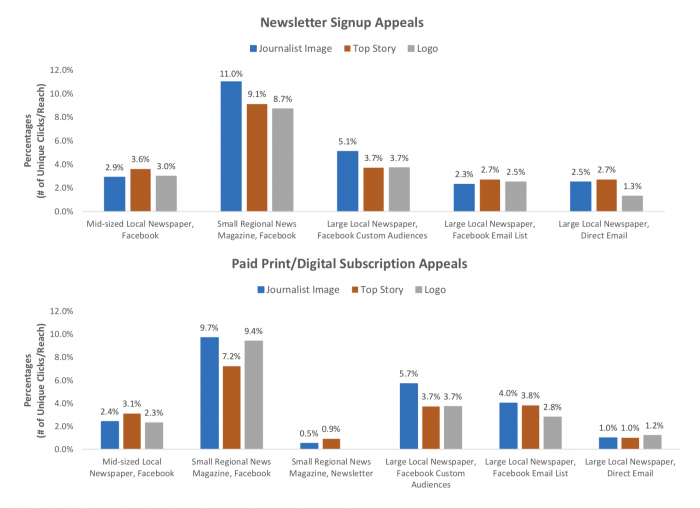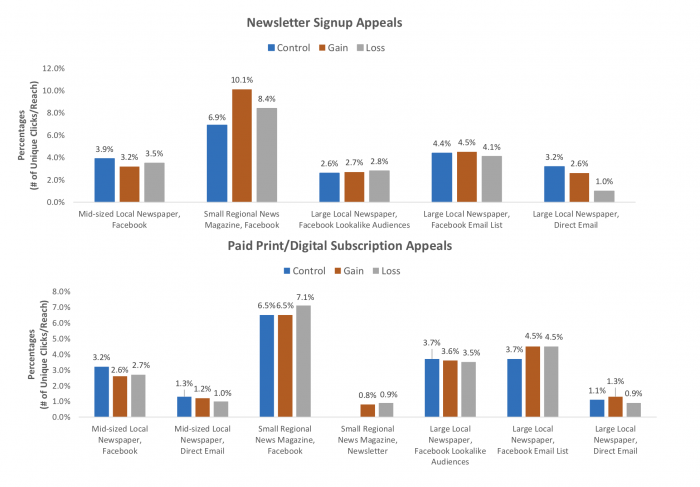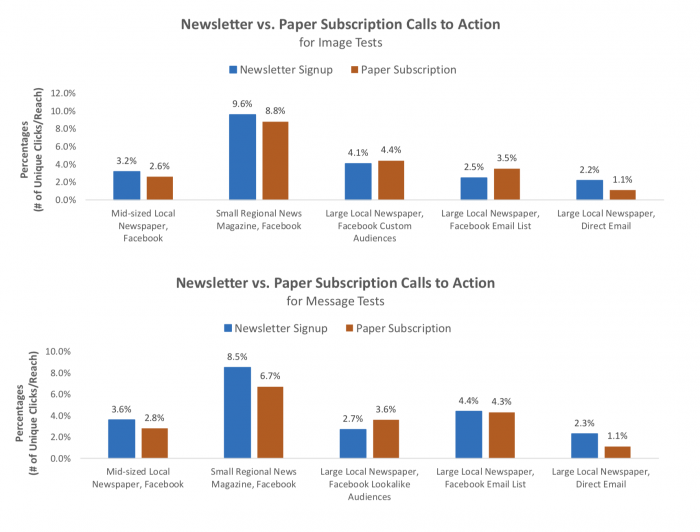
Your logo isn’t that cool anymore. But talking about what your audience can gain from following you is.
A new report from the Center for Media Engagement at the University of Texas at Austin, written by Natalie Stroud, Yujin Kim, and Jessica Collier studied different ways news organizations proffer themselves to potential subscribers through the lens of paid Facebook ads promoting their subscriptions.
In a nutshell: “People aren’t persuaded by logos or messages conveying what’s at stake, and they want to sign up for free newsletters more than they want to pay for a subscription,” Collier said.
In a study funded by the American Press Institute, CME worked with six news organizations that already have a reputation for bringing in subscription or donor money (only three newsrooms were included in the experimental portion). The news organizations, ranging from a large local newspaper in the southwest to a small regional newsmagazine in the west, then tested the following strategies on either a promoted Facebook post, an email, and/or an advertisement in their newsletter:
The experiment took place for one month between April and May 2018, using a combination of 23 different tests and hitting almost 500,000 Facebook or email accounts. And they spent nearly $5,000 per newsroom during that time, with not too many subscriptions as a result. The topline findings:
- On Facebook, logos reduce click-through on subscription appeals relative to other images, such as journalists doing their work.

- When soliciting subscriptions via email, messages emphasizing what you’d lose without news frequently result in lower click-through rates compared to other strategies, such as telling people what they’d gain from a subscription or just giving them details about the subscription.

- Ads for free newsletter subscriptions garner more clicks than do ads for paid print/digital access.

- For the messages and images tested here, there is little evidence that Facebook ads alone yield an acceptable return on investment.
The CME researchers also note that many more people actually clicked through to the subscription page than actually ended up subscribing, hinting that there could be an issue with that page. These findings can be added to the funnel for getting to the funnel of loyal audiences/subscribers. A similar study by CME and City Bureau focused on news consumers in Chicago at the beginning of this year found that individuals are more likely to donate money to a free news site than pay money to access the news.
But perhaps the newsletters are just sowing the fruit of reader relationships to come. As Spirited Media’s Brian Boyer framed it: “The website is for adding newsletter subscribers, and the newsletter is for making members.”Read the full CME report here.